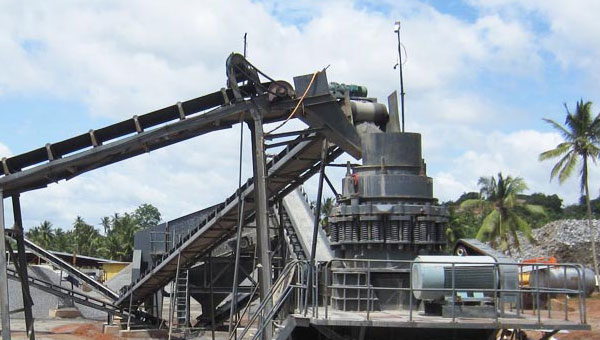Quarries play a significant role in the construction industry, providing essential materials for infrastructure development. To extract valuable minerals and aggregates, such as sand, gravel, and crushed stones, quarry operators rely on heavy machinery and equipment. One of the most vital components of a quarry operation is the installation of crushers. Crushers are machinery designed to break down large rocks into smaller, manageable pieces, essential for further processing and commercial use. In this essay, we will delve into the importance of crushers in quarry operations, the various types available, and the process of their installation.

Importance of Crushers in Quarry Operations
Crushers are indispensable in quarry operations for several reasons:
Material Size Reduction: Quarried rocks and minerals are often too large for immediate use. Crushers break down these bulky materials into smaller, uniform sizes, making them suitable for transportation, handling, and processing.
Increased Efficiency: Crushing the extracted material on-site reduces the need for additional transportation, thereby lowering operating costs and minimizing environmental impact.
Versatility: Crushers come in various types to accommodate different materials and end products, such as jaw crushers, impact crushers, and cone crushers. This versatility allows quarry operators to produce a wide range of products to meet market demands.
Types of Crushers for Quarry Operations
Jaw Crushers: These machines use a fixed jaw plate and a moving jaw plate to compress and crush the material. Jaw crushers are ideal for coarse and medium-sized rocks and are often used in primary crushing stages.
Impact Crushers: Impact crushers utilize the principle of rapid impact to crush the material. They are suitable for both soft and hard rocks and are commonly used in secondary or tertiary crushing stages.
Cone Crushers: Cone crushers are designed to crush materials between a stationary mantle and a rotating cone-shaped head. They are well-suited for processing hard and abrasive materials and are commonly used in the final stage of crushing.
Gyratory Crushers: Gyratory crushers consist of a cone-shaped head that gyrates within a larger bowl-shaped housing. They are primarily used for large-scale operations and are often utilized in the primary crushing stage.
Installation Process of Crushers in Quarry Operations
Site Evaluation: Before installing crushers, a thorough site evaluation is essential to determine the most suitable location for the machinery. Factors such as geology, topography, accessibility, and environmental considerations must be taken into account.
Foundation Preparation: Strong and stable foundations are crucial for the proper functioning of crushers. The ground should be adequately compacted and leveled to support the heavy machinery and prevent structural issues.
Machinery Assembly: Experienced technicians assemble the crushers according to the manufacturer’s specifications. Proper assembly ensures optimal performance and safety during operation.
Electrical and Mechanical Integration: Connecting the crusher to the quarry’s electrical and mechanical systems is a critical step. This includes setting up power sources, control panels, conveyor belts, and other components necessary for the crusher’s operation.
Safety Measures: Safety is paramount during the installation process. Adequate safety protocols and equipment, such as guardrails and emergency shut-off switches, must be implemented to protect workers and prevent accidents.
Testing and Commissioning: Once the installation is complete, thorough testing and commissioning are conducted to ensure that the crusher operates efficiently and meets performance standards.
